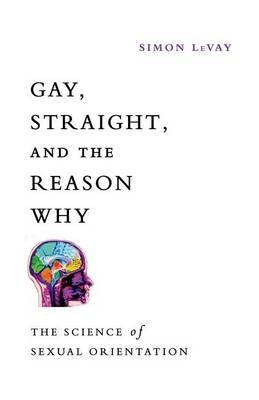
Gay, Straight, and the Reason Why
Oxford University Press Inc (Verlag)
978-0-19-993158-3 (ISBN)
- Titel ist leider vergriffen;
keine Neuauflage - Artikel merken
Although many details remain unresolved, the general conclusion is quite clear: A person's sexual orientation arises in large part from biological processes that are already underway before birth.
Simon LeVay is a British-born neuroscientist who has served on the faculties of Harvard Medical School and the Salk Institute for Biological Studies. He has written ten previous books, including the New York Times best-seller, When Science Goes Wrong.
Introduction ; Chapter 1: What Is Sexual Orientation? ; Criteria for sexual orientation ; Sexual orientation in men and women ; Stability of sexual orientation ; Prevalence of different orientations ; Are there categories? ; Sexual orientation across cultures ; Chapter 2: Why We Need Biology ; Psychoanalytic theories ; Learning theories-influence of early sexual experiences ; Learning theories-gender learning ; Is it a choice? ; The biological alternative ; Chapter 3: The Outline of a Theory 30 ; Male and female brains ; Male and female behaviors ; Development of sex differences in animals ; Sexual partner preference in animals ; Origins of variation within each sex ; Relevance to human sexual orientation ; Sexual orientation in nature ; Chapter 4: Childhood ; Development of gendered childhood traits ; Childhood traits associated with adult sexual orientation: retrospective studies ; Prospective studies ; Contrasting models ; Chapter 5: Characteristics of gay and straight adults ; Gendered traits in adulthood 54 ; Origin of gendered traits ; Sexual orientation and cognitive traits: visuospatial abilities 58 ; Verbal fluency ; Memory tasks ; Handedness ; Intelligence ; Personality traits: Masculinity-femininity ; Occupational preferences ; Other personality traits ; Sexuality ; Overview ; Chapter 6: The role of sex hormones ; Hormone levels in gay and straight adults ; Why focus on prenatal sex hormones? ; Hormone levels during development ; Congenital adrenal hyperplasia ; Finger length studies ; The inner ear ; Central auditory system ; Action of sex hormones on the developing brain ; Possible causes of variability in prenatal androgen levels ; Chapter 7: The role of genes ; Sibling studies ; Is the family clustering caused by genes? ; Twin studies ; Molecular genetics-candidate-gene studies ; Genome scans ; Genes and sexuality in fruit flies ; Genes, homosexuality, and evolution ; Kin selection ; The "fertile female" hypothesis ; Beneficial effects on same-sex relatives ; Chapter 8: The brain ; A brief tour of the brain ; The hypothalamus and sexual orientation ; Other brain regions ; Brain activity ; Pheromone studies ; Sheep ; Overview ; Inhibition and sexual orientation ; Chapter 9: The body ; Body size and shape ; Trunk and limb length ; Penis size ; Symmetry and developmental instability ; Hair whorl direction ; Gaydar ; Overview ; Chapter 10: The older-brother effect ; How well established is the older brother effect? ; How strong is the older brother effect? ; The older-brother effect and handedness ; What causes the older-brother effect? ; Is the older-brother effect adaptive? ; Chapter 11: Conclusions ; Sexual orientation is linked to other gendered traits ; A common origin for gender-shifted traits? ; The role of genes ; Does the older-brother effect work through prenatal hormones? ; Is there a random biological influence? ; How does sexual orientation become categorical? ; Diversity among gay people ; Changes in the prevalence and nature of homosexuality ; Sexual orientation and gender: the social fallout ; Glossary ; Bibliography
| Zusatzinfo | Illustrations |
|---|---|
| Verlagsort | New York |
| Sprache | englisch |
| Maße | 149 x 210 mm |
| Gewicht | 454 g |
| Themenwelt | Geisteswissenschaften ► Psychologie ► Sexualität / Partnerschaft |
| Geisteswissenschaften ► Psychologie ► Sozialpsychologie | |
| Geisteswissenschaften ► Psychologie ► Verhaltenstherapie | |
| ISBN-10 | 0-19-993158-5 / 0199931585 |
| ISBN-13 | 978-0-19-993158-3 / 9780199931583 |
| Zustand | Neuware |
| Haben Sie eine Frage zum Produkt? |
aus dem Bereich


